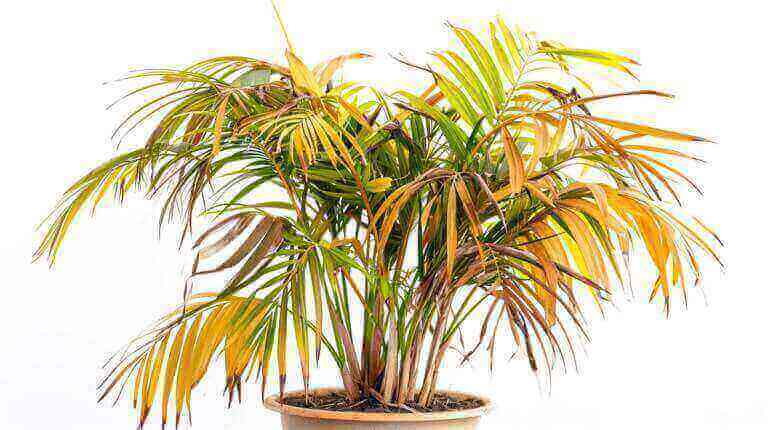Caring for Fittonia Argryoneura and Other Nerve Plant Varieties: A Comprehensive Guide
Fittonia argryoneura, commonly known as the nerve plant, is a beautiful and compact plant with stunning patterned foliage. Native to South America, specifically Peru, this plant thrives in tropical rainforests as ground cover under the shade of trees. Caring for Fittonia and other nerve plant varieties is a rewarding experience that can bring a touch of lush greenery into your home or office.
In this comprehensive care guide, I will share essential tips and techniques for nurturing your Fittonia argryoneura and other nerve plants. From providing the right amount of light and humidity to watering and feeding methods, you’ll learn everything you need to know to ensure the health and vibrancy of your precious plants.
Key Takeaways:
- Fittonia argryoneura, also known as the nerve plant, is a compact plant with striking patterned foliage.
- It is native to South America, specifically Peru, and thrives in tropical rainforests.
- Fittonia prefers bright, indirect light and thrives in humid conditions.
- Proper watering and fertilizing are essential for the health of your Fittonia plant.
- Regular pruning and propagation techniques can help promote bushy growth and expand your collection of nerve plants.
Light, Temperature, and Humidity Requirements for Fittonia
Fittonia, or nerve plant, has specific requirements when it comes to light, temperature, and humidity. Understanding these needs will help ensure the health and vitality of your Fittonia plant.
Light Requirements
Fittonia prefers bright, indirect light. While it can tolerate lower light conditions, placing the plant in a well-lit area will promote optimal growth. Consider placing it near a window with filtered sunlight or using supplemental grow lights if needed. Avoid exposing it to direct sunlight, as this can scorch the leaves.
Temperature Requirements
Fittonia thrives in temperatures around 70°F (21°C). However, it can tolerate a range of temperatures between the low 60s°F (16-18°C) and low 80s°F (26-27°C). Avoid exposing the plant to extreme temperature fluctuations, as this can cause stress and damage. Keep it away from drafts or vents that can create hot or cold spots.
Humidity Requirements
Fittonia is native to tropical rainforests, where high humidity levels are abundant. To mimic its natural habitat, provide a humid environment for your Fittonia plant. Regularly mist the leaves with water or use a pebble tray filled with water to increase humidity around the plant. Another option is to place the Fittonia in a bathroom or terrarium, where humidity tends to be higher.
| Light Requirements | Temperature Requirements | Humidity Requirements |
|---|---|---|
| Bright, indirect light | Around 70°F (21°C) | High humidity |
| Tolerates lower light conditions | Low 60s°F (16-18°C) to low 80s°F (26-27°C) | Regular misting or humid environment |
| Avoid direct sunlight | Avoid extreme temperature fluctuations |
Watering and Feeding Fittonia
Proper watering and feeding are essential for the health and vitality of Fittonia plants. In this section, we will explore the best practices for watering and fertilizing Fittonia to ensure optimal growth and thriving foliage.
Watering Fittonia
Fittonia plants have a high water requirement and prefer to be kept constantly moist. However, it’s important to strike a balance and avoid overwatering, as this can lead to root rot. To determine when to water your Fittonia, simply check the top inch of soil. If it feels dry to the touch, it’s time to water.
When watering your Fittonia, use room temperature water and thoroughly drench the soil. Allow any excess water to drain away, as waterlogged soil can suffocate the roots. To maintain the necessary moisture levels, consider using a pebble tray or placing the plant on a water-filled saucer while ensuring the roots do not sit in standing water.
Fertilizing Fittonia
Fittonia plants benefit from regular feeding during the growing season. Use a balanced liquid fertilizer diluted to half strength and apply it weekly. This will provide the necessary nutrients for healthy growth and vibrant foliage.
When fertilizing Fittonia, be sure to follow the instructions on the fertilizer packaging for proper dilution and application. Overfertilizing can lead to nutrient burn and damage the plant. Remember to adjust the frequency and strength of fertilization during the dormant period, typically in the fall and winter months.
| Aspect | Guidelines |
|---|---|
| Watering Frequency | Check soil moisture by testing the top inch of soil. Water when dry to the touch. |
| Watering Method | Thoroughly water the soil, allowing excess water to drain away. Avoid waterlogged conditions. |
| Fertilizing Frequency | Apply a balanced liquid fertilizer diluted to half strength weekly during the growing season. |
| Fertilizing Method | Follow the instructions on the fertilizer packaging for proper dilution and application. |
Potting and Repotting Fittonia
Proper potting and repotting are essential for the health and growth of Fittonia plants. When potting or repotting Fittonia, it’s important to choose the right soil and pot, ensuring proper drainage for the plant’s roots.
Soil: Fittonia thrives in a well-draining soil mix with a peat moss base. This type of soil retains some moisture while allowing excess water to drain away. You can find pre-mixed potting soil suitable for Fittonia at your local garden center or create your own mix by combining peat moss, perlite, and potting soil in equal parts.
Pot: Select a pot with drainage holes to prevent waterlogging and ensure proper water drainage. Fittonia plants prefer slightly snug pots, so choose a pot that is just slightly larger than the plant’s root ball. Avoid pots that are too big, as they can retain too much moisture and lead to root rot.
When repotting Fittonia, gently remove the plant from its current pot, being careful not to damage the roots. Inspect the root ball and remove any dead or damaged roots. Place the plant in the new pot, ensuring that it sits at the same level as it did in the previous pot. Fill in the remaining space with fresh potting soil, firming it gently around the roots. Water the plant thoroughly after repotting to help settle the soil and hydrate the roots.
Table: Potting and Repotting Fittonia Tips
| Tip | Description |
|---|---|
| Choose the right soil mix | Use a well-draining soil mix with a peat moss base. |
| Select a pot with drainage holes | Ensure proper water drainage by using a pot with drainage holes. |
| Repot annually | Repot Fittonia plants annually in spring or early summer to prevent soil compaction. |
| Use a slightly larger pot | Choose a pot that is slightly larger than the plant’s root ball to allow for growth. |
| Firm the soil gently | After repotting, firm the soil gently around the roots to provide stability. |
Pruning and Propagating Fittonia
Pruning is an essential aspect of Fittonia care to promote healthy and bushy growth. By pinching off the tips of the stems, you encourage the plant to develop more lateral branches, resulting in a fuller appearance. It’s best to prune Fittonia in early spring when new growth starts to emerge. Simply use your fingertips or a clean pair of pruning shears to remove the top portion of each stem.
Propagating Fittonia is a great way to expand your plant collection or share the beauty of these vibrant plants with friends. Stem and leaf cuttings are the most common methods of propagation for Fittonia. To propagate through stem cuttings, select a healthy stem with a few sets of leaves and snip it just below a node. Place the cutting in a jar of water or a moist peat-based soil mix, ensuring that at least one node is submerged. Within a few weeks, you should see roots starting to develop.
If you prefer propagating with leaf cuttings, choose a healthy leaf and carefully separate it from the stem. Lay the leaf flat on top of a moist soil mix, pressing it lightly into the surface. Keep the soil consistently moist, and within a few weeks, new roots and baby plants will start to appear. Once the new plants have grown a few inches tall, you can transplant them into individual pots.
Propagation Methods Comparison
| Propagation Method | Pros | Cons |
|---|---|---|
| Stem Cuttings | Easy and reliable method | Takes longer for roots to develop compared to leaf cuttings |
| Leaf Cuttings | Rapid root development | May require additional steps like using rooting hormone |
Both stem and leaf cuttings can yield successful results when propagating Fittonia. Choose the method that suits your preference and resources. With a little patience and care, you can enjoy the satisfaction of growing new Fittonia plants from cuttings.
Common Issues and Troubleshooting Guide for Fittonia
When caring for Fittonia, it’s important to be aware of common issues that may arise. By understanding these problems and their solutions, you can ensure the health and vitality of your plant.
One common issue with Fittonia is overwatering, which can lead to root rot. If you notice yellowing leaves, it may be a sign that the plant is receiving too much water. To rectify this, adjust your watering schedule and allow the top inch of soil to dry out before watering again.
Lack of humidity can also be a problem for Fittonia. If you notice crispy leaves, it may indicate that the humidity levels are too low. To increase humidity, mist the plant regularly or place it in a bathroom or terrarium where moisture is higher.
Fittonia can also be susceptible to insect infestations, such as fungus gnats, mealybugs, or aphids. If you spot any signs of pests, it’s important to act quickly. Treat the infestation with an appropriate insecticidal oil, and regularly inspect the plant to prevent the infestation from spreading.
FAQ
What is a nerve plant?
The nerve plant, also known as Fittonia albivenis, is a tropical houseplant characterized by its dark green leaves with bright pink veins. It’s often referred to as the mosaic plant or painted net leaf due to its intricate leaf patterns.
How do you care for a nerve plant?
Nerve plant care involves providing the plant with a humid environment, as it’s a tropical plant. This can be achieved by using a room humidifier or placing the plant in a well-lit bathroom. The plant prefers indirect light, so placing it near a window with a sheer curtain can be beneficial.
What types of nerve plants are there?
There are many varieties of Fittonia or nerve plants, each with unique leaf patterns and colors. The most common is Fittonia albivenis, which has dark green leaves and bright pink veins.
How often should you water a nerve plant?
Nerve plants prefer to keep the soil moist but not waterlogged. The frequency of watering will depend on the growing conditions, such as light, humidity, and temperature.
How do you fertilize nerve plants?
Fertilizing nerve plants can be done using a balanced houseplant food. It’s important to follow the instructions on the plant food packaging to avoid over-fertilization.
Why is my nerve plant wilting?
Wilting in nerve plants can be a sign that the plant is getting too much or too little water. It could also indicate that the plant is in a location with cold drafts, which these tropical plants don’t tolerate well.
Can nerve plants grow indoors?
Yes, nerve plants do well indoors. They are small plants that adapt well to indoor conditions, making them an easy-to-care-for houseplant.
Can you grow nerve plants from cuttings?
Yes, propagating nerve plants from cuttings is quite easy to do. Simply take a cutting from a healthy plant, place it in water until roots form, and then plant it in soil.
Are nerve plants prone to pests?
Like any houseplant, nerve plants can be susceptible to pests. Regularly check your plant for signs of infestation and treat it promptly if you notice any pests.







